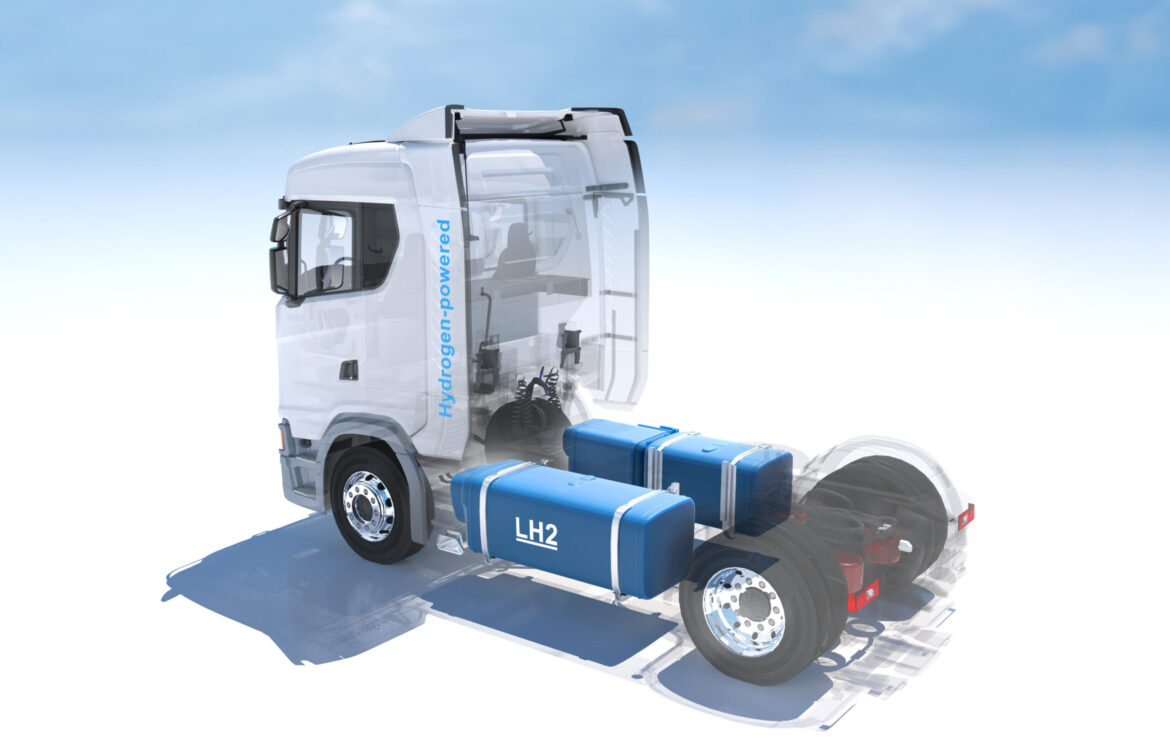
How it Works: Hydrogen Fuel Cell Electric Vehicle
Battery electric vehicles are grabbing many headlines through trailblazing companies in the automotive industry. However, there is another technology, which receives less publicity, that also produces no tailpipe CO2 emissions and propels the vehicle by electricity: The Hydrogen Fuel Cell Electric Vehicle. These are well suited to certain commercial vehicle applications, and as with the battery electric commercial vehicle, thermal management is of importance to ensure efficiency and high performance.
In the fuel cell electric vehicle, the fuel cell uses hydrogen to provide electricity for the electric motors that propel the vehicle. The process for this typically involves introducing hydrogen to an anode within the fuel cell. At the anode, a catalyst causes the hydrogen molecules to undergo an electrochemical reaction, breaking apart into protons and electrons. The protons travel through a membrane to the cathode, whilst the electrons travel through an external circuit. This passage of the electrons allows them to perform useful work, such as providing energy to the vehicle’s electric motors. At the cathode, the electrons that have travelled through the circuit are combined with the protons that have travelled from the anode, and with oxygen from the ambient air, to produce water.
It is apparent that the above process consumes hydrogen to provide electricity to the vehicle and its systems. Therefore, the vehicle needs to be periodically refueled with hydrogen to allow for continued use. To fully refuel a fuel cell commercial electric vehicle from empty typically takes a matter of minutes – and is faster than an equivalent battery vehicle, with a full charge of hydrogen commonly giving more range than an equivalent battery electric vehicle. This makes the technology well suited to applications, such as heavy-duty commercial trucks, that must maximize the amount of time they are on the road and that must travel long distances. Other benefits include being able to handle extremes of temperature, and the inherent safety advantages of hydrogen as a fuel versus conventional fuels.
Naturally, efficiency of operation remains a prime consideration for operators of commercial fuel cell electric vehicles who want to minimize fuel costs and maximize vehicle performance. The efficiency of the fuel cell depends in part on maintaining its operation within a relatively small temperature range of between, for example, 60°C and 80°C. As the fuel cell generates heat during its operation, it is therefore necessary to have a means to cool the fuel cell to maintain this temperature range.
This cooling is accomplished by a Fuel Cell Stack Cooling Package. This passes heat from the fuel cell stack into a coolant, which in turn is pumped into a radiator so that it can be cooled by ambient air. Fans are then used to control the flow of air through the radiator to optimize cooling. From the radiator, the coolant returns to the fuel stack. To improve the vehicle efficiency further, the waste heat from the fuel cell can be recovered through a heat exchanger and passed to a cabin heater, lessening the demand for electricity produced by the fuel cell to be used for cabin heating.
In the case of the Modine Fuel Cell Stack Cooling Package (FC-SCP), there are a number of features to improve efficiency yet further. With the Modine-developed firmware included in the master thermal controller, variations in temperature of the fuel cell stack are predicted to be within 2°C to 3°C, thereby allowing for a high degree of temperature control to ensure maximum durability and longevity of the fuel cell. High-voltage fans are the default choice for the FC-SCP to minimize the electrical power required for cooling. Additionally, the FC-SCP is IP67-rated for protection against the harshest environments, ensuring vehicle reliability.
In addition to vehicle efficiency, Modine’s Fuel Cell Stack Cooling Package (FC-SCP) has also been developed to maximize the efficiency of the team integrating the cooling into the vehicle. All necessary heat exchangers, smart electric products, and wiring are included, as well as a master controller and tailored firmware to provide complete operation upon delivery. Our team of Modine application engineers will validate that one of our standard configuration systems meets your needs or customize a design to fit your application.





